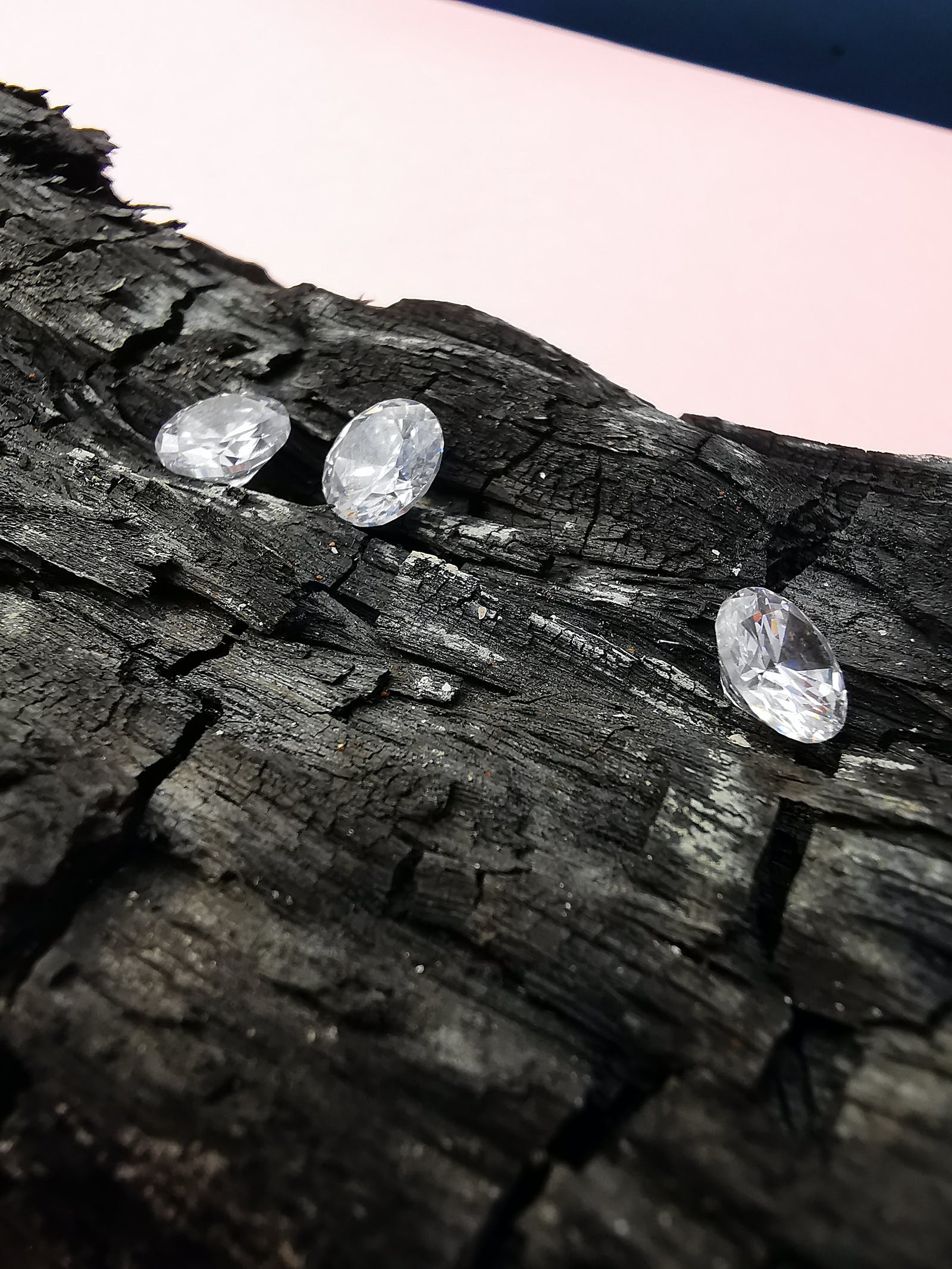Lab grown diamonds can be readily identified by anyone with eyes. However, if you’re in the market to buy a diamond and aren’t sure whether or not it’s been lab-grown, here are some signs you should look out for!
Imperfections
When looking at a diamond, people will often just look at how clear it is and how many inclusions or imperfections it has. This is because these two things make up 50% of the value. But what if someone told you that there was an easier way to tell whether or not the diamond was real? Well, there is. Lab grown diamonds have some distinctive imperfections that set them apart from natural stones. These include larger facets, poor polish, and different inclusions. The way a lab grown diamond looks under a microscope can also give away its origins. For example, all the reflections in an authentic stone will point towards one another when examined through a microscope; whereas with synthetic diamonds, they don’t align like this.
Lab grown diamonds were first created by Canadian company Apollo Diamonds back in 1995 (ABC).
Size
Lab grown diamonds are often indistinguishable from mined or natural diamonds. They are chemically, physically and optically identical. However, there are still some telltale signs you can look for:
1) Lab-grown stones have a slightly different refractive index than natural stones (although it’s not always easy to distinguish between them). The diamond is tested by shining light through it to see how it reflects. A natural stone will reflect at a higher rate of speed than one that was created in the laboratory.
2) Lab-grown gems will be more symmetrical and perfect. They also may have smaller imperfections in shape and size. There are other ways to test the authenticity of a diamond including examining the crystal structure with an optical microscope. But these tests require high-end equipment which would be hard to do without specialized training.
Weight
There is no single way to identify a lab-grown diamond. However, some general indications might help you spot one.
CVD diamonds can have any colour or clarity and they can be made in any shape. This means that they could look just like natural diamonds, so there’s no way to know for sure without sending them off for testing.
Furthermore, as with most things in life, price is usually an indicator of quality (or lack thereof). Lab-grown stones tend to be cheaper than natural ones because they’re not mined from deep within the Earth–instead, they’re created by machines in labs. But again, price doesn’t always correlate to value when it comes to gems. If you do get your hands on a lab-grown stone, there are ways you can tell.
Color
Lab grown diamonds can be identified by their colour. Natural, mined diamonds have a range of colours from light yellow to dark blue because they absorb different elements in the Earth’s crust as they form. Lab grown diamonds, on the other hand, start white and become whiter over time as they grow.
Lab grown diamond producers also use a chemical treatment to make their creations look like natural stones. One way is through irradiation, which heats up and breaks down carbon atoms to create new ones that give off different colours. Irradiated laboratory-grown diamonds will have traces of blue or green in them. However, these treatments may not always be detectable because there is no universal standard for detecting them. Some labs, such as Rapaport Labs, take microscopic pictures of every stone they produce.
diamonds can also be distinguished by checking whether the stone has any inclusions – spots inside the gem where metal particles left during cutting are trapped. Mined diamonds often have blemishes from imperfections inside the earth that sometimes caused gems to shatter. These usually do not exist in lab-grown gems. Lab created diamonds can be detected because some companies list when their stones were manufactured on certificates accompanying them with purchase. If you cannot find this information before buying a diamond, you should request it after your purchase so you know if you’re buying something made artificially or naturally.








